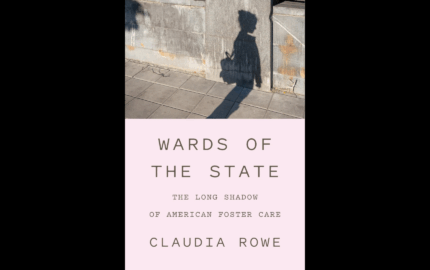We interrupt your syllabus prep with this important message:
Consider Nieman Storyboard as a resource – and even publication destination – in your reporting, writing and journalism ethics courses.
Storyboard is a trove of what I call “story work.” It’s part anthology, part textbook, part conversation. The site evolves with the times, but at heart remains a place to explore the art and craft of nonfiction storytelling. The leaning is toward narrative, but it welcomes all genres of stories, produced on any platform. Podcasts, documentary film, video, Instagram stories, TikTok, personal letters, personal essays, even fiction and poetry — all share some foundational aspects of story work we can learn from. Students can find short gems like our series on nut grafs, personal essays about how master journalists learned the craft, the challenges of writing a book and more.
How might Storyboard help you teach?
1. READING ASSIGNMENTS AND CLASS DISCUSSIONS
Many of the classics of narrative journalism are featured on the site. Some include an interview with the author, some an analysis by a well-known piece by one or more accomplished journalists. When I taught at the Missouri School of Journalism, I held weekly “story salons” in my in-depth reporting/writing classes. Each student had to research a piece of published journalism of their choosing (from Storyboard, other anthologies or current publications), write a why-it-works analysis of the piece and lead a 20-minute class discussion that drilled down on craft.
2. INTERVIEW AND WRITING ASSIGNMENTS
Have students interview the writer (or editor, photographer, podcaster, etc.) about a story they liked, or perhaps one that presented reporting or ethical challenges. The student researches, rites and fact-checks a piece based on that interview, including their own analysis. Bonus points to students who get the professional journalist to Zoom into class for a 20-minute Q&A.
3. PITCHES TO STORYBOARD
Have students study the various Storyboard categories (listed on the site's home page), then pitch a piece for publication. This could take various forms:
Pitched stories need to meet Storyboard standards: Solid, transparent and fact-checked reporting; relevant links; supporting interviews with editors, reporting colleagues, story subjects as needed; consideration of multi-media; respect for grammar, syntax and AP Style. This is best for upper-division or master's-level students.
The above is just a starting point. Feel free to use Storyboard to shape your own creative assignments. Surprise me and help each other. If you work with master's students, consider some aspect of their research as a Storyboard project. I’d also love pitches from you, as editors and educators, about teaching, craft, stories you love – whatever help us understand how this work is done and why it matters.
Consider Nieman Storyboard as a resource – and even publication destination – in your reporting, writing and journalism ethics courses.
Storyboard is a trove of what I call “story work.” It’s part anthology, part textbook, part conversation. The site evolves with the times, but at heart remains a place to explore the art and craft of nonfiction storytelling. The leaning is toward narrative, but it welcomes all genres of stories, produced on any platform. Podcasts, documentary film, video, Instagram stories, TikTok, personal letters, personal essays, even fiction and poetry — all share some foundational aspects of story work we can learn from. Students can find short gems like our series on nut grafs, personal essays about how master journalists learned the craft, the challenges of writing a book and more.
How might Storyboard help you teach?
- Add it to your reading list. It includes classic and current journalism, and discussions about how those stories were done. Bonus: It’s free!
- Have your students tap it as a mentoring network. The journalists on the site – whether featured reporters or contributors – are generous with their time. They remember how they started, and usually are happy to give back.
- Make Storyboard a publication destination in your advanced or master-level classes. I can’t promise publication, but would love to see pitches from individuals or as class projects. Here is a sampling of assignment ideas:
1. READING ASSIGNMENTS AND CLASS DISCUSSIONS
Many of the classics of narrative journalism are featured on the site. Some include an interview with the author, some an analysis by a well-known piece by one or more accomplished journalists. When I taught at the Missouri School of Journalism, I held weekly “story salons” in my in-depth reporting/writing classes. Each student had to research a piece of published journalism of their choosing (from Storyboard, other anthologies or current publications), write a why-it-works analysis of the piece and lead a 20-minute class discussion that drilled down on craft.
2. INTERVIEW AND WRITING ASSIGNMENTS
Have students interview the writer (or editor, photographer, podcaster, etc.) about a story they liked, or perhaps one that presented reporting or ethical challenges. The student researches, rites and fact-checks a piece based on that interview, including their own analysis. Bonus points to students who get the professional journalist to Zoom into class for a 20-minute Q&A.
3. PITCHES TO STORYBOARD
Have students study the various Storyboard categories (listed on the site's home page), then pitch a piece for publication. This could take various forms:
- Pitch the author interview from the assignment above as a “Why’s This So Good,” "Story Annotation" or "Strictly Q&A."
- Pick a single aspect of reporting or writing for a “Story Craft” post. Have the student interview a few journalists who are masters of that particular skill. For example: talk to three reporters about how they interview for intimacy, or how they report a narrative in a day, or how they structure a complex piece with both narrative and expository information. Alternatives:
- Drill down on one story, interviewing that story’s author, with an acute focus on a single aspect of craft.
- Write a piece about some aspect of craft based on the student’s own experiences as a student reporter or intern and from their journalism classes.
KEEP IN MIND
Pitched stories need to meet Storyboard standards: Solid, transparent and fact-checked reporting; relevant links; supporting interviews with editors, reporting colleagues, story subjects as needed; consideration of multi-media; respect for grammar, syntax and AP Style. This is best for upper-division or master's-level students.
The above is just a starting point. Feel free to use Storyboard to shape your own creative assignments. Surprise me and help each other. If you work with master's students, consider some aspect of their research as a Storyboard project. I’d also love pitches from you, as editors and educators, about teaching, craft, stories you love – whatever help us understand how this work is done and why it matters.



